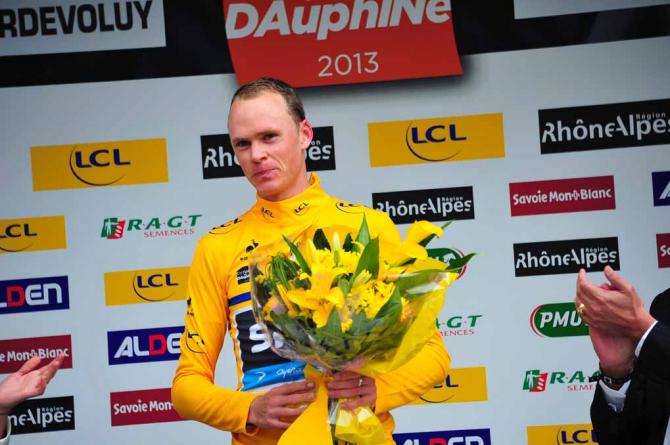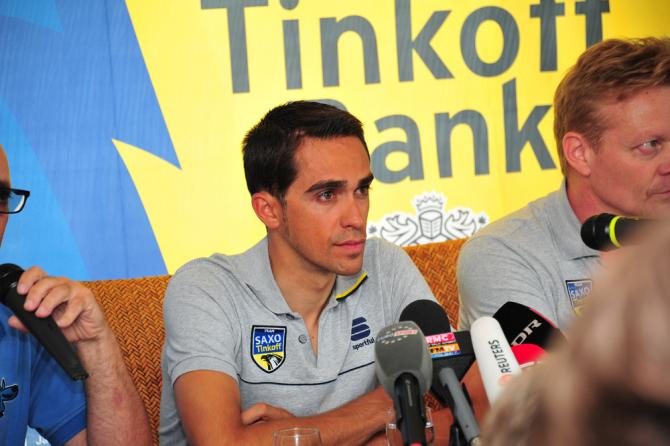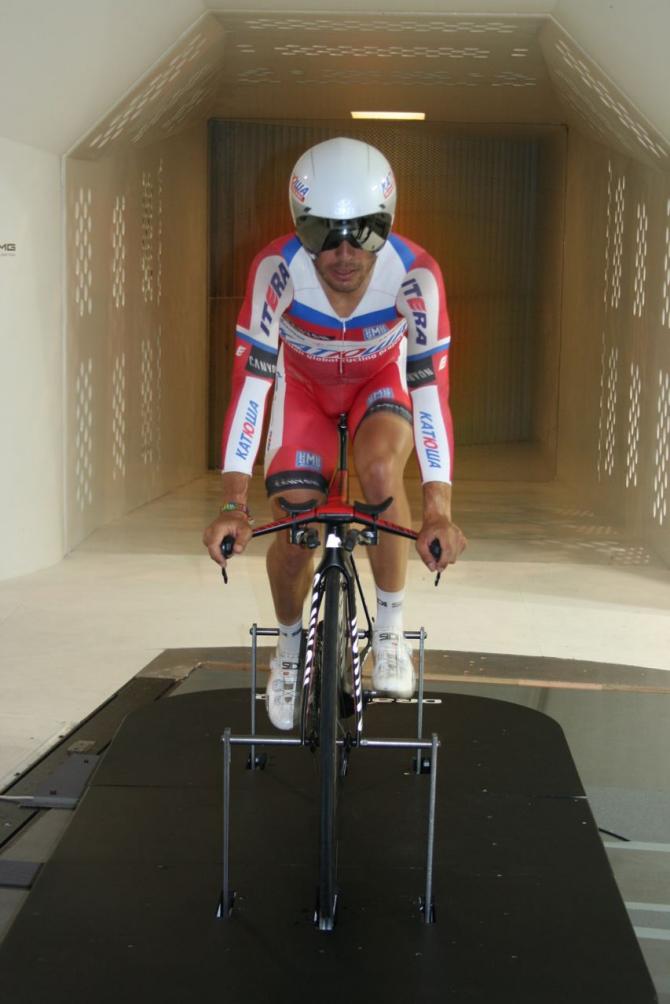Five key stages of the 2013 Tour de France
Breaking down the route of La Grande Boucle



The opening week, from Corsica to Albi.
2012 Tour de France - five key stages
Giro d’Italia 2013: Five key stages
100th Tour de France start list
For the overall contenders, the first key stage of the 2013 Tour de France is seven days long. The opening week is always a nervous affair, with 198 fresh riders battling for space on narrow roads, but for the overall contenders, it is usually a question of simply avoiding crashes before the real hostilities begin in the mountains. This time around, however, there are more potential pitfalls than usual in the opening week and a handful of openings to steal some time early on for riders with a dash of invention.
The Tour’s rugged start in Corsica instantly gives a rather different feel to the opening week. The peloton faces a pair of second category climbs as early as stage 2 to Ajaccio and the following day’s sinuous stage to Calvi will be very difficult for any one team to control. There is scarcely a metre of flat as it winds along the coast and the drop from the Col de Marsolino to the finish gives escapees a fighting chance of staying clear.
The stage 4 team time trial back on the mainland in Nice ought to restore some order to proceedings, but if the mistral picks up on stage 6 to Montpellier, the peloton could be split to pieces, as was the case on the road to nearby La Grande-Motte four years ago. With every directeur sportif bellowing in his riders’ earpieces to hit the front every time there is a change in direction (and there are plenty on the 176km stage), there is also a high risk of crashes regardless of the wind, and positioning will be absolutely crucial for the overall contenders. A sticky day of moyenne montagne to Albi follows ahead of the race’s entry into the Pyrenees.
On the evidence of the Dauphiné, Sky will be expected to dictate terms in the high mountains and so their rivals should look on this opening week as an opportunity to seize the initiative for themselves. Sky’s startling collective might is at its most evident in relatively controlled environments, like high mountains and time trials, where power output is the ultimate arbiter. Undulating races on twisting roads have proven to be something of a leveller, however – see Sky’s relative performances in the Classics, the penultimate stage of Tirreno-Adriatico and the first ten days of the Giro d’Italia for exhibits A, B and C – and punchy riders like Alberto Contador, Joaquim Rodriguez and Cadel Evans might well be tempted to test them out early on.
Stage 8: Saturday, 6 July. Castres – Ax 3 Domaines, 195km
With no Tourmalet and no Aubisque on the menu, the Tour’s foray into the Pyrenees seems somewhat incomplete this year, but that is offset by the strategic importance of this stage. There are far tougher days to come later in the Tour but this is the first summit finish of the race and, consequently, it should be the first time that the overall contenders’ credentials are placed under close scrutiny.
Get The Leadout Newsletter
The latest race content, interviews, features, reviews and expert buying guides, direct to your inbox!
The day’s main difficulties are shoehorned into the final part of the stage and so there is a relatively gentle start to proceedings for the peloton on leaving Castres, with the category 4 Côte de Saint-Ferréol the only ripple in the opening 140 kilometres or so. On entering the Ariège, however, the road begins to ratchet upwards with the hors categorie Col de Pailhères (15.3km at 8%) quickly followed by the category 1 ascent to the finish at Ax 3 Domaines (7.8km at 8.2%).
The old adage says that the Tour won’t be won at its first major rendezvous but we might get an idea of how it will be won. Sky tend to bristle at such comparisons, but like US Postal before them, the British outfit typically looks to lay down a marker on the first summit finish of a stage race by whittling the leading group down, as was the case at La Planche des Belles Filles on the corresponding stage last year.
Assuming they follow the usual template, the Sky plan will be for the men in black to set a fierce tempo on the final climb, peeling off one by one until only Richie Porte and Chris Froome and a very elite group of rivals remain. The likes of Alberto Contador, Joaquim Rodriguez and Cadel Evans will all be expecting this collective onslaught from Sky, and it will be fascinating to see who looks to actively counteract it and who simply hopes to withstand it.
Stage 11: Wednesday, 10 July. Avranches – Mont-Saint-Michel, 33km (individual time trial)
The third week time trial from Embrun to Chorges has the tougher profile – it includes two second category climbs – and ought to provoke larger time gaps, but this 33 kilometre test in the dramatic Baie du Mount-Saint-Michel comes at the midway point of the race and in the middle of a seeming lull in proceedings between the Pyrenees and the Alps, and is thus a hugely important milestone on the road to Paris.
The general classification should already have begun to take some shape after the race’s incursion into the Pyrenees, but it should come into far sharper definition by the end of this time trial. At the Critérium du Dauphiné, Froome and Porte inflicted serious losses on Contador, Rodriguez and Alejandro Valverde (Movistar) in a time trial of identical length, and if those form lines hold to July, the Spanish trio could quickly find themselves all but out of the running. They’ll need to perform significantly better here.
The time trial could also prove something of a watershed moment for BMC. Cadel Evans is the designated leader and Tejay van Garderen will be riding in his service in the Pyrenees, but the American has been stronger against the watch over the past year and has the chance to nudge ahead of him on general classification at Mont-Saint-Michel. Twelve months ago, van Garderen put time into Evans in the first long time trial but BMC did not alter its hierarchy until deep into the third week. It’s hard to imagine that they will wait so long if the situation repeats itself this time around, even allowing for Evans’ resurgent podium finish at the Giro d’Italia last month.
Stage 15: Sunday, 14 July. Givors – Mont Ventoux, 242.5km
The longest stage of the Tour is all about the final 20.8 kilometres to Mont Ventoux. A clutch of home riders will escape in the early kilometres in the hope of grabbing some Bastille Day glory, but as the kilometres tick by, the Giant of Provence will loom on the horizon and ultimately deliver its inexorable verdict on the day’s proceedings and – perhaps – on the Tour itself.
A trio of category four climbs and the category 3 Côte de Bourdeaux feature in the early part of the stage but, in reality, the expected heat will prove the greater discomfort to a peloton mindful of what is to follow on Mont Ventoux, an unforgiving mountain whose overall difficulty exceeds the sum of its already cruel parts.
The average gradient of 7.8% is not an altogether intimidating one in itself but that is tempered by the fact that the opening 5 kilometres out of Bedoin are relatively benign. The road rears up significantly at the Saint Estève hairpin after 8 kilometres, however, and the steepest sections of the climb come through the forestry that follows. The greenery gives way to exposed whit rock at Chalet Reynard, with 6 kilometres still to race, and while the gradients soften slightly through this moonscape, the riders are now completely exposed to the sun and the strong winds that gave the mountain its name.
Throughout its history, Mont Ventoux has proven to be notoriously difficult to tame, and a number of lofty names have been forced to give best to the implacable giant, from Ferdi Kubler’s dramatic collapse in 1955 to Lance Armstrong’s conclusion that “Mont Ventoux doesn’t like me” (to be fair, it wasn’t the only one). Even Eddy Merckx could only manage a score draw with the Ventoux in 1970 – although he won the stage, he couldn’t conquer the mountain and needed an oxygen mask on crossing the line.
In this rarefied atmosphere, Sky’s tactical approach to the high mountains ought to be handed its stoutest test. The Tour’s most recent visits to Mont Ventoux have been characterised by a stop-start tempo on the climb, and the constant shifts in gradient do not seem ideally suited to Sky’s brand of collective pace-making. When Kubler attacked early on the Ventoux in 1955, Raphaël Géminiani issued a prescient warning: “Careful, Ferdi, Ventoux is no ordinary col. You can’t tell it what to do.” It will be fascinating to see if that is still the case in 2013.
Stage 18: Thursday, 18 July. Gap – Alpe-d’Huez, 168.5km
The final week of the Tour has been very deliberately crammed with Alpine stages as ASO look to sustain the suspense as late as possible but a glance at recent history suggests that while race organisers can provide the stage for their performers, they can’t supply the script. The 2004 and 2009 Tours also saw only brief forays into the Pyrenees on routes peppered with moyenne montagne stages ahead of the grand finale in the Alps, but on each occasion, the race was all but decided entering the final week and there was a sense of anti-climax.
No matter, the great sting in the 2013 Tour’s tail kicks off with a potentially explosive stage to Gap followed by a possibly decisive time trial from Embrun to Chorges on stage 17. The summit finish to Semnoz on the short penultimate stage promises intrigue aplenty, too, but there is no denying that the centrepiece of the final week of racing is the novel stage to Alpe-d’Huez, which sees the Tour fall in line with cycling’s increasing propensity for circuit races and tackle the climb twice in one day.
Alpe-d’Huez is normally preceded by passage over a mammoth such as the Galibier but there is a gentler start the action here, with the Col de Manse (Category 2), Rampe du Motty (Category 3) and Col d’Ornon (Category 2) providing the obstacles in the opening 90 kilometres. Alp-d’Huez is next up and while a grand spectacle is guaranteed for those on the roadside, one wonders if the overall contenders will be willing to show their hand on the first ascent or if they will opt to keep their powder dry for the finale. Certainly, on the evidence of the (admittedly very different) Kwaremont-Paterberg combination at the Tour of Flanders, it would be no surprise if caution reigned.
The race makes its way down from Alpe-d’Huez by way of the second category Col de Sarenne, and the narrow, twisting descent has come in for robust criticism from Tony Martin, who believes it to be too dangerous for the Tour. It remains to be seen if ASO are moved by such concerns and opt for a late route change, but in any case, the double ascent of the Alpe is not in danger. Like Mont Ventoux, Alpe d’Huez is a climb with a mystique that extends beyond its 8.1% gradient and 1850 metre altitude. The famous 21 hairpins provide plenty of changes in tempo and scope for punchy climbers to make up some of the ground lost in the previous day's time trial. If they can't manage it here, they will reach the ski station at the summit aware that the Tour has moved definitively out of reach.


Barry Ryan was Head of Features at Cyclingnews. He has covered professional cycling since 2010, reporting from the Tour de France, Giro d’Italia and events from Argentina to Japan. His writing has appeared in The Independent, Procycling and Cycling Plus. He is the author of The Ascent: Sean Kelly, Stephen Roche and the Rise of Irish Cycling’s Golden Generation, published by Gill Books.